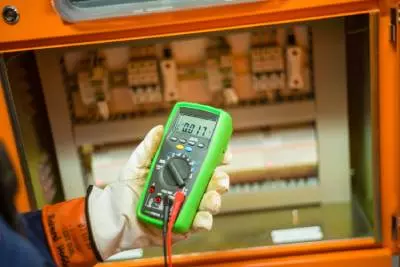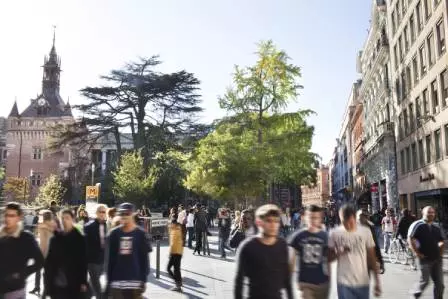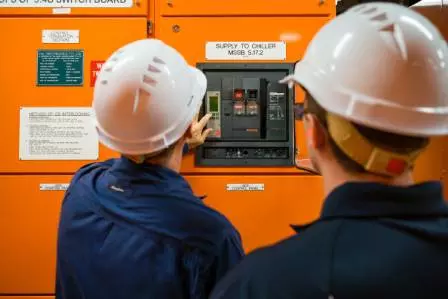More specifically, recent geopolitical conflicts have triggered an unprecedented global awareness of the immediate energy challenges we face. There are solutions, including energy sobriety and local, affordable, low-carbon energy production.
Changes in the way we behave and the way we consume have also become essential.
But what exactly does the concept of energy sobriety mean? How can it be implemented, and what are the ways in which we can consume less? What can consumers, manufacturers and businesses do? And how can we reduce energy consumption while increasing sobriety and reducing CO2 emissions?
Energy sobriety is at the heart of a major challenge: meeting energy needs while preserving the planet and its inhabitants.
This is the definition given in the energy sobriety plan launched by the government on 6 October 2022 to gradually move the country away from its dependence on fossil fuels, while reducing energy consumption by 40% by 2050.
"Energy sobriety means making a collective, proportionate and reasonable effort to reduce energy wastage".
In practical terms, energy sobriety means voluntarily making planned reductions in energy consumption. It applies to all our daily activities at the level of the individual (limiting the indoor temperature, for example), or to concrete measures for sustainable mobility and limiting energy consumption at the level of a company (teleworking, car-sharing, introducing soft mobility solutions such as cycling, etc.). Finally, energy sobriety implies profound changes in behaviour, whether individual or collective.
While many people understand "effort" to mean an increase in constraints and restrictions, it is possible to understand this same concept in a different way. The IPCC uses the word "sufficiency". The idea is to meet needs without unnecessary excess, thereby reducing energy demand and, with it, the production of greenhouse gases, the primary cause of climate change. Sobriety therefore appears to be an essential lever for achieving carbon neutrality.

Energy sobriety and renewable energies
These are the 3 pillars of the energy transition to reduce our greenhouse gas emissions and limit global warming. While energy sobriety means consuming less, energy efficiency means consuming differently. For example? Using your bike instead of your car is a good example of sobriety, while opting for a hybrid or electric car is a good example of sobriety. Renewable sources, such as sewage and waste, provide local, sustainable, low-carbon energy. These 3 principles will help us to reduce our dependence on fossil fuels and make significant savings. They tick all the boxes: good for the citizen, the wallet and the planet!

Energy sobriety: everyone involved
Sobriety means using resources as sparingly as possible, to avoid waste and reduce our energy consumption. With this in mind, an individual could give priority to car-sharing for his or her journeys, a company could turn off all appliances at night rather than leaving them on standby, a local authority could install low-energy light bulbs to illuminate public spaces... The emergency sobriety in response to the tensions over energy supplies that affected the country in 2022 seems to be transforming itself into a sustainable sobriety calling on each and every one of us to be more consistent in terms of our needs and the means of satisfying them.
Energy sobriety: Veolia makes a commitment
Veolia has initiated a number of initiatives combining energy sobriety measures and alternative local energy production solutions. This is particularly true in France, where the company is working to make all its water and waste activities energy self-sufficient by 2027. The aim is to make the facilities operated by Veolia less energy-intensive and, at the same time, to produce more energy by, for example, generalising the production of biogas through the degradation of organic waste, installing photovoltaic panels on closed storage centres, or replacing ageing equipment that uses too much energy.

Energy saving: Veolia's solutions
The solutions implemented by Veolia at its facilities are also those offered to all of the Group's customers, so that they can significantly reduce their energy consumption, increase their energy efficiency and decarbonise their activities. Replacing the equipment that consumes the most energy, such as aeration systems at wastewater treatment plants, and lowering temperatures in buildings is an essential step towards energy sobriety.
Another solution is to identify and recover sources of waste heat. Derived from industrial processes that release thermal energy, such as flue gas condensates, cooling water, hot air and steam, it can significantly reduce fossil fuel consumption and CO2 emissions. Until recently, this heat was "lost" because it was not captured. Today, it is recovered in situ or externally, in heating networks. An example ? Data centres. While these facilities use a lot of energy, particularly via their cooling systems, they also lose a lot. It is precisely this energy that escapes into the atmosphere that is recovered and used, as in Brunswick in Germany, helping to make the plant energy self-sufficient.
Our energy solutions:
Electrical flexibility is a particularly effective way of reducing energy consumption. It consists of maintaining the balance between supply and demand on an electricity network by making the most of the producers and consumers connected to it. The principle is simple: electricity consumption is modulated according to the needs, activity and technical constraints of businesses, for example by increasing production at a cogeneration plant or reducing consumption at a water treatment plant. In this way, power cuts can be avoided.
This solution helps to optimise the performance of sites operated by Veolia thanks to more than 60 Hubgrade digital control centres around the world. These intelligent energy management services make it possible to view, assess and optimise energy consumption and production remotely, resulting in positive energy buildings.
In less than 20 years, 9 billion people will inhabit the earth, and the rise of the middle class and global digitalisation will generate a 30% increase in energy requirements. Energy sobriety is the key to meeting these challenges.


